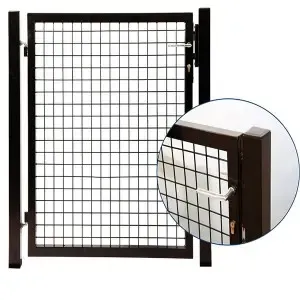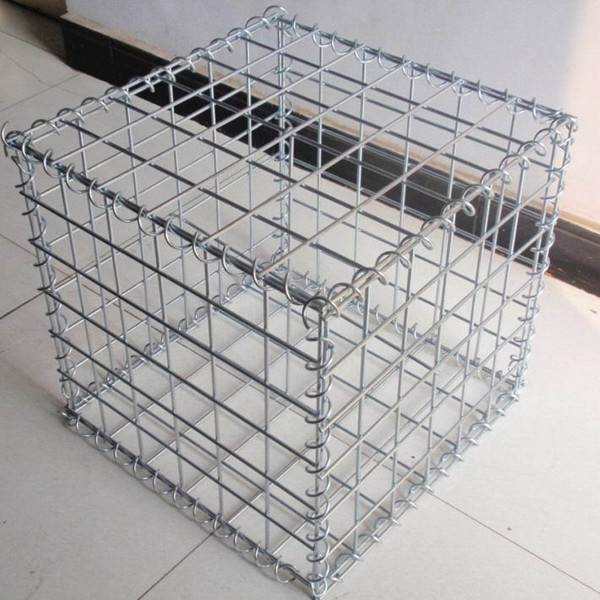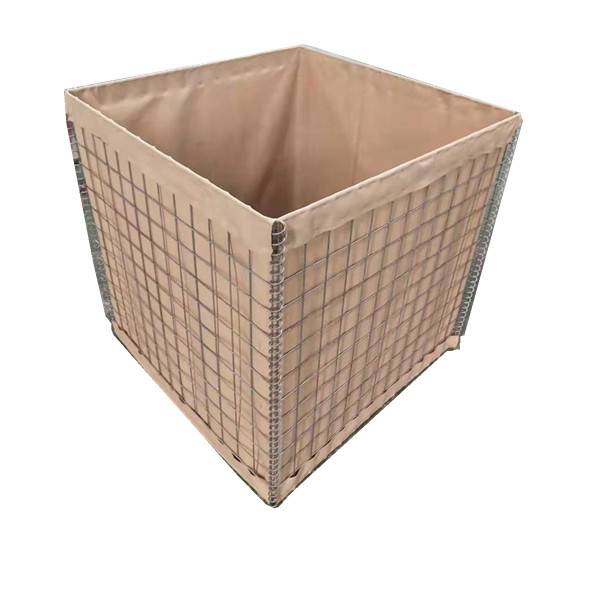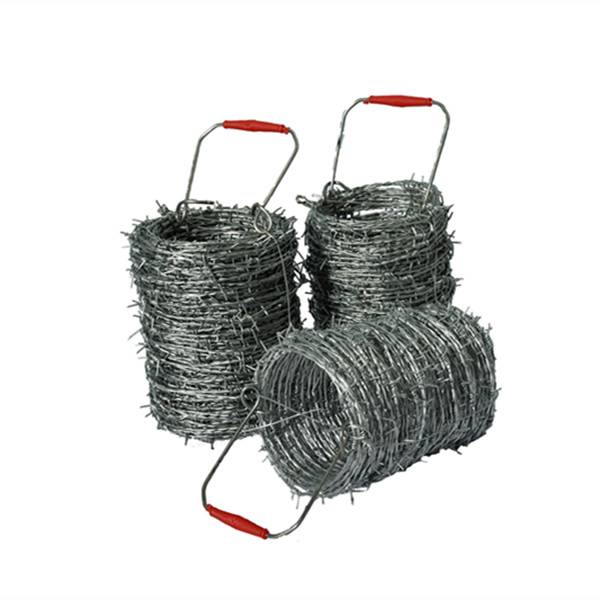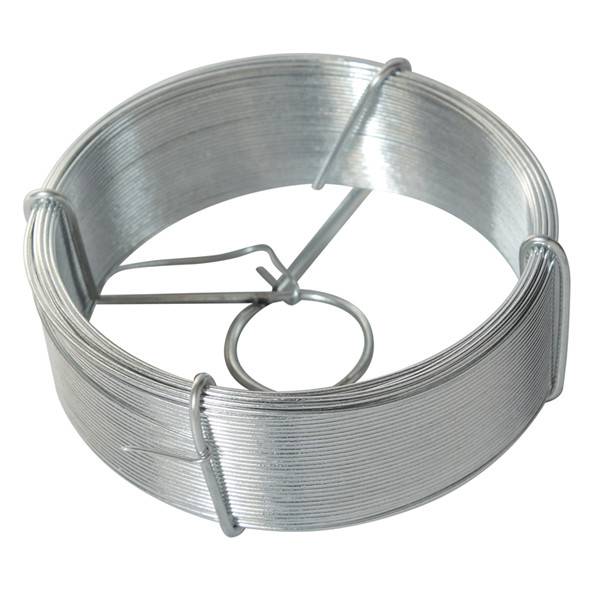
Comprehensive Guide to Chicken Welded Wire Mesh: Uses, Benefits & Suppliers
Home>News>Comprehensive Guide to Chicken Welded Wire Mesh: Uses, Benefits & SuppliersNov . 23, 2025 23:00 Back to list
Comprehensive Guide to Chicken Welded Wire Mesh: Uses, Benefits & Suppliers
Chicken Welded Wire Mesh: What It Is and Why It Matters Worldwide
Let’s start with the basics. Chicken welded wire mesh — it sounds straightforward, but it's actually a silent hero in industries from agriculture to construction. Globally, as the demand for reliable, cost-effective fencing rises, understanding this material helps a ton. It’s not only about keeping chickens safe; it’s about durability, affordability, and often, community development. Chicken welded wire mesh is basically a network of metallic wires, welded to form consistent squares or rectangles. Used for fencing chicken coops, garden protection, or as mesh in construction, it balances strength and flexibility. Worldwide, especially in developing countries and agricultural hubs, it safeguards poultry while being affordable and durable enough for rugged conditions. Mini takeaway: Chicken welded wire mesh is a simple but powerful solution, essential for food security and infrastructure across global markets.The Global Context: Why Chicken Welded Wire Mesh Is More Than Just Fencing
Globally, poultry farming is massive — according to the UN’s Food and Agriculture Organization (FAO), over 23 billion chickens are raised each year. That’s an insane scale! Reliable fencing is crucial for preventing predators, diseases, and escape. Countries with rapidly growing rural populations, like India, Nigeria, and Brazil, rely heavily on chicken welded wire mesh to bolster local economies and food supply. But here’s the catch: traditional fencing materials either cost too much or deteriorate fast in harsh climates. That’s a real problem we face globally as food security becomes a major concern in the wake of climate change. The mesh addresses these issues by offering durability, corrosion resistance, and low maintenance. It’s also relatively easy to transport and install, even in remote regions struggling with infrastructure. Mini takeaway: Chicken welded wire mesh fills a critical niche in global food systems by delivering durable, cost-efficient fencing vital for poultry farming success worldwide.What Exactly Is Chicken Welded Wire Mesh?
In simple terms, chicken welded wire mesh is a grid made by electrically welding intersecting wires at each joint. Usually galvanized to prevent rust, the wire thickness and mesh size vary depending on the application. The name comes from its widespread use in poultry fencing — but it extends far beyond that. Nowadays, it’s a cornerstone in modern farming, industrial fencing, and even humanitarian aid projects (think temporary shelters or garden fencing after disasters). It dovetails neatly with sustainability efforts by promoting reusable, long-lasting materials. Mini takeaway: The mesh is a versatile, metal-grid product adapted to countless uses, all rooted in its strength and adaptability.Looking Closer: Key Factors Behind Its Popularity
1. Durability
Quality chicken welded wire mesh is galvanized or PVC-coated to resist rust, enduring harsh weather year-round. Many engineers say this is why it outlasts older woven wire nets by years.2. Cost Efficiency
Compared to wood or plastic fencing, it’s cheaper upfront and lasts longer — meaning fewer replacements and repairs. This makes it a favorite among budget-conscious smallholders.3. Installation Ease
It’s lightweight, flexible to roll out, yet strong enough to hold shape. Farmers can install it themselves, saving on labor.4. Versatility
The mesh sizes and wire gauges vary for chickens, rabbits, gardens, or construction uses. Plus, it comes in rolls, sheets, or custom-cut panels.5. Scalability
From backyard coops to large industrial farms, it scales effortlessly. This solves a common challenge in both community farming and commercial operations. Mini takeaway: These core features make chicken welded wire mesh a practical choice — balancing ruggedness, price, and flexibility.Global Applications: More Than Just A Chicken Coop
Sure, its primary use in poultry farms is obvious. But interestingly, this mesh finds roles in multiple sectors worldwide: - Agriculture: Besides chickens, it protects vegetable gardens from pests in places like Kenya and Mexico. - Construction: Acts as a support mesh in plastering or concrete reinforcement, especially in developing countries with evolving building codes. - Disaster Relief: NGOs use chicken welded wire mesh to erect temporary fences and garden plots for displaced communities. - Urban Farming: In cities, community gardens rely on this mesh as affordable, lightweight fencing. For instance, I read about an initiative in Nepal where after the 2015 earthquake, mesh fencing helped rebuild home gardens ensuring food production restarted quickly. Mini takeaway: It’s highly adaptable, used worldwide wherever security, agriculture, and construction intersect.Advantages and Long-Term Value
To drill down — why pick chicken welded wire mesh over other materials? Here are a few angles: - Cost Savings: Low maintenance reduces long-term costs. - Sustainability: Galvanized steel’s recyclability aligns with green industry goals. - Community Impact: Protecting flocks means safeguarding livelihoods, creating food stability. - Reliability: It holds up in rain, heat, and snow — no flimsy failures. - Peace of Mind: Knowing your livestock or crops are secure offers a sense of dignity and trust. Emotionally, this mesh connects farmers with hope — a simple product supporting a big dream: food independence.Emerging Trends and Innovations
Some exciting things are bubbling up in this realm: - Eco-friendly coatings: Biodegradable or low-VOC coatings take sustainability higher. - Smart Mesh: Embedding sensors for pest detection or wire tension. - Automation: Prefabricated panels delivered drone or robot-assisted installation. - Hybrid Materials: Combining metal with biodegradable polymers for lighter, customizable fencing. Many manufacturers are striving to innovate while keeping prices low — a balancing act as tricky as any in manufacturing.Challenges and Solutions
Yet, chicken welded wire mesh isn’t perfect. Common issues include: - Corrosion in Extreme Environments: Despite galvanization, saltwater exposure can cause rust. - Damage from Wildlife: Larger animals sometimes tear through weaker mesh. - Installation Skills: Poor installation risks sagging or security gaps. Solutions? Using higher-grade stainless steel variants and improved coatings help with corrosion. Thicker gauge wires deter larger animals. Some companies now provide training videos and after-sales support to ease installation woes.FAQ: Your Top Questions About Chicken Welded Wire Mesh
Q1: How long can chicken welded wire mesh last outdoors?A1: Generally, galvanized chicken welded wire mesh lasts between 5 and 15 years, depending on exposure and maintenance. PVC coatings can extend longevity further by protecting against rust and scratches.
Q2: Can I customize the mesh size for different birds?
A2: Absolutely. Mesh sizes range from about 1/2 inch to 2 inches or more, suited to small birds like chicks or larger fowl. Custom widths and lengths are often available to fit specific coop designs.
Q3: Is this mesh suitable for harsh climates like coastal areas?
A3: While standard galvanized mesh can handle most climates, coastal or highly humid areas benefit from stainless steel mesh or PVC-coated variants designed to resist salt-induced corrosion.
Q4: Can chicken welded wire mesh be used in construction?
A4: Yes, it’s often used as reinforcement for concrete or plaster, as well as temporary site fencing. Its rigidity and strength make it versatile beyond agriculture.
Q5: Where can I buy reliable chicken welded wire mesh?
A5: Check reputable suppliers who offer quality certifications and detailed specs. Our recommended resource includes chicken welded wire mesh options with trusted guarantees.
Product Specification Table
| Specification | Value/Range | Notes |
|---|---|---|
| Material | Galvanized Steel / Stainless Steel | Options vary by supplier |
| Wire Gauge | 16 - 23 gauge | Higher gauge equals thinner wire |
| Mesh Opening Size | 1/2" to 2" | Custom sizes available |
| Coating | Galvanized, PVC Coated | PVC adds extra corrosion resistance |
| Available Lengths | 25ft, 50ft, custom | Rolls or cut sheets |
| Weight per Roll | 10–20 kg | Depends on gauge and length |
Vendor Comparison: Choosing Your Chicken Welded Wire Mesh Supplier
| Vendor | Material Quality | Price Range | Customization | Shipping | Warranty |
|---|---|---|---|---|---|
| SteelMesh Co. | Hot-dip galvanized, heavy gauge | $$ | Mesh size, length | Worldwide, 5-day average | 5 years against rust |
| EcoWire Solutions | PVC coated, mid gauge | $$$ | Full customization | US & EU only | 7 years limited warranty |
| GlobalFencing Hub | Standard galvanized | $ | Limited options | Worldwide, 10-15 days | No warranty |
Wrapping Up: Why This Simple Mesh Has a Huge Role
It’s kind of impressive how something as straightforward as chicken welded wire mesh quietly supports billions worldwide. Durable, efficient, scalable — it’s a staple in feeding communities, building infrastructure, and even aiding disaster recovery. Frankly, it feels like one of those underrated heroes in global agricultural innovation. For those looking to invest or simply learn more about quality options, a quick visit to chicken welded wire mesh suppliers can open doors to reliable, tested products ready for any challenge. ### References 1. Food and Agriculture Organization (FAO). “Poultry Production Statistics.” fao.org. 2. International Organization for Standardization (ISO). “Standards for Welded Wire Mesh.” iso.org. 3. United Nations Environment Programme (UNEP). “Sustainable Agriculture & Materials.” unep.org.Latest news
-
Custom Weld Mesh – Tailored Solutions for Durable Industrial Fencing & Construction
NewsNov.24,2025
-
BRC Weld Mesh – Durable Reinforcement Solutions for Modern Construction
NewsNov.23,2025
-
Durable BRC 3315 Mesh for Reliable Concrete Reinforcement | Hardware In Store
NewsNov.23,2025
-
Discover the Benefits of Green Weld Mesh – Durable, Sustainable Fencing Solutions
NewsNov.22,2025
-
Electro Welded Mesh: Durable, Versatile Steel Grid Solutions | HardwareInStore
NewsNov.22,2025
Products categories
NEED HELP?
Don' t Hesitate To Contact Us For More Information About Company Or Service
CONTACT US





